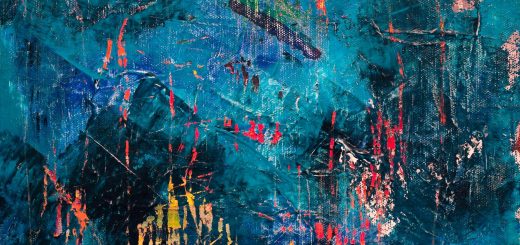Santeria: Cuban Syncretic Faith and Yoruba Heritage

Before diving in, please note: This post is for informational purposes only. If you’d like to know more about how we approach topics, feel free to check out our friendly Disclaimer Page.
Hey there, amazing readers! 🖐️ Just a quick note: yes, we know there are a lot of ads here. Trust us, we get it—it’s not the prettiest look, but they help us keep this blog alive and kicking. Those pesky little ads cover the costs of all the behind-the-scenes magic, from hosting and tech stuff to creating content we hope you’ll love.
We’re committed to delivering quality posts, and your support (even just sticking around despite the ads) means everything to us. So, bear with us, and thanks for helping us keep the good vibes rolling. Now, on to the fun stuff! 😉
TRANSLATE BUTTON AT THE END OF THE ARTICLE
Introduction to Santeria
Santeria, also known as Regla de Ocha, La Regla de Ifá, or Lucumí, is a syncretic religion that originated in Cuba and has its roots in the Yoruba people of West Africa.
This vibrant faith combines elements of Catholicism with traditional African religions, particularly the Yoruba religion.
Santeria is a spiritual practice that honors a pantheon of deities known as Orishas, who are believed to govern different aspects of life.
With its rich rituals, ceremonies, and beliefs, Santeria holds a significant place in Cuban culture and has also spread to other parts of the world.
Origins of Santeria
Santeria traces its origins back to the transatlantic slave trade when African slaves were brought to Cuba and other parts of the Americas.
These enslaved individuals brought with them their religious beliefs, which were later blended with Catholicism due to the influence of Spanish colonizers.
Over time, this fusion of African spirituality and Catholicism gave rise to what is now known as Santeria.
The early practitioners of Santeria used Catholic saints as a cover for their worship of the Orishas, adapting their traditions to conceal their religious practices from slave owners.
Yoruba Influence in Santeria
The Yoruba people, an ethnic group from Nigeria, Benin, and Togo, heavily influenced the development of Santeria.
The Orishas worshipped in Santeria are derived from the Yoruba pantheon of deities, known as the Orishas or Orichas.
These Orishas represent various natural forces, emotions, and aspects of life, and each has its distinct characteristics and powers.
The Yoruba influence can be seen in the language, rituals, and mythology of Santeria, making it a unique blend of African and European spiritual traditions.
Beliefs and Practices
Central to the beliefs of Santeria is the idea that humans can communicate with the Orishas through prayers, offerings, and rituals.
Practitioners of Santeria believe in the existence of a universal life force called Ashe, which flows through all living things.
By connecting with the Orishas and harnessing Ashe, individuals can seek guidance, protection, healing, and blessings in their lives.
Santeria also emphasizes the importance of balance, harmony, and reciprocity in relationships with the divine and the natural world.
Deities in Santeria
The Orishas are revered as intermediaries between humans and the Supreme Being, Olodumare.
These deities embody various aspects of nature, such as the sea, rivers, thunder, love, and wisdom.
Each Orisha has its symbols, colors, offerings, and feast days associated with them.
Some of the most prominent Orishas in Santeria include Oshun, the goddess of love and fertility; Yemaya, the mother of all Orishas and the ocean; and Shango, the god of thunder and justice.
Devotees invoke these Orishas for assistance in their daily lives and spiritual journeys.
Rituals and Ceremonies
Santeria rituals and ceremonies are intricate and elaborate, often involving music, dance, prayers, offerings, and divination.
One of the most common rituals in Santeria is the Kariocha initiation ceremony, where individuals are consecrated as priests or priestesses of the Orishas.
Other rituals may include cleansings, divinations, and offerings to specific Orishas for guidance or protection.
Music and dance play a crucial role in Santeria ceremonies, as they are believed to invoke the presence of the Orishas and facilitate spiritual communication.
Sacrifices in Santeria
Sacrifices are an essential aspect of Santeria rituals and ceremonies, as they are seen as a way to communicate with the Orishas and express devotion.
Animal sacrifices, such as chickens, goats, or pigeons, are commonly offered to the Orishas as a sign of gratitude and respect.
The sacrificed animals are believed to carry the prayers and intentions of the devotees to the spirit world, where the Orishas can receive them.
Sacrifices in Santeria are performed with utmost care and reverence, following specific guidelines and rituals to ensure the proper communication with the divine.
Divination in Santeria
Divination is a prevalent practice in Santeria used to seek guidance, insight, and solutions to life’s challenges.
Santeria diviners, known as Babalawos or Santeros, use various tools like cowrie shells, tarot cards, or divining chains to communicate with the Orishas and interpret their messages.
Divination ceremonies involve complex rituals and offerings to invoke the Orishas’ presence and receive their wisdom.
Through divination, practitioners of Santeria can gain clarity on important decisions, diagnose spiritual imbalances, and navigate life’s uncertainties with the guidance of the Orishas.
Santeria in Cuba
Santeria has deep roots in Cuban culture and society, where it has flourished and become an integral part of the country’s religious landscape.
Cuban Santeria blends traditional African practices with Spanish Catholicism, Afro-Cuban music, and dance traditions.
The religion has its temples, priests, and devotees throughout the island, with Havana being a significant center for Santeria rituals and ceremonies.
Many Cubans turn to Santeria for spiritual guidance, healing, protection, and blessings in their lives, seeking the wisdom and power of the Orishas to navigate life’s challenges.
Spread of Santeria
In recent decades, Santeria has spread beyond Cuba to other parts of the world, including the United States, Europe, and Latin America.
The diaspora of Cuban immigrants and cultural exchange have played a significant role in the global dissemination of Santeria.
In countries like the United States, where there is a sizable Cuban population, Santeria has gained popularity and visibility, attracting followers from diverse backgrounds.
Santeria’s emphasis on harmony with nature, spiritual connection, and empowerment has resonated with people seeking a holistic and inclusive spiritual practice.
Controversies Surrounding Santeria
Despite its rich cultural heritage and spiritual depth, Santeria has faced controversies and misunderstandings, particularly regarding its use of animal sacrifices in rituals.
Some critics have raised concerns about animal welfare and ethical considerations in Santeria practices, leading to legal battles and public debates.
Additionally, misconceptions and stereotypes about Santeria as dark or occult have perpetuated negative perceptions of the religion.
However, proponents of Santeria argue that these controversies stem from a lack of understanding of its spiritual principles and cultural significance.
Conclusion: Santeria Today
Santeria continues to thrive as a vibrant and dynamic faith that blends African, European, and indigenous traditions in a unique and profound way.
Its emphasis on spiritual connection, community, and empowerment has attracted followers from diverse backgrounds and regions.
In the modern world, Santeria serves as a source of spiritual guidance, healing, and cultural identity for its practitioners, offering a pathway to connect with the divine, honor the ancestors, and seek harmony with nature.
As Santeria evolves and adapts to changing times, its rich heritage and rituals remain a vital part of Cuban culture and a testament to the resilience of Afro-Cuban traditions.

The Enlightenment Journey is a remarkable collection of writings authored by a distinguished group of experts in the fields of spirituality, new age, and esoteric knowledge.
This anthology features a diverse assembly of well-experienced authors who bring their profound insights and credible perspectives to the forefront.
Each contributor possesses a wealth of knowledge and wisdom, making them authorities in their respective domains.
Together, they offer readers a transformative journey into the realms of spiritual growth, self-discovery, and esoteric enlightenment.
The Enlightenment Journey is a testament to the collective expertise of these luminaries, providing readers with a rich tapestry of ideas and information to illuminate their spiritual path.
Our Diverse Expertise 🌟
While our primary focus is on spirituality and esotericism, we are equally passionate about exploring a wide range of other topics and niches 🌍📚. Our experienced team is dedicated to delivering high-quality, informative content across various subjects ✨.
To ensure we provide the most accurate and valuable insights, we collaborate with trusted experts in their respective domains 🧑🏫👩🏫. This allows us to offer well-rounded perspectives and knowledge to our readers.
Our blog originally focused on spirituality and metaphysics, but we’ve since expanded to cover a wide range of niches. Don’t worry—we continue to publish a lot of articles on spirituality! Frequently visit our blog to explore our diverse content and stay tuned for more insightful reads.





